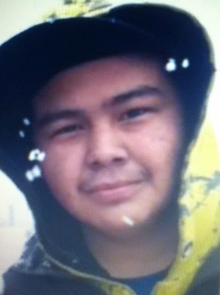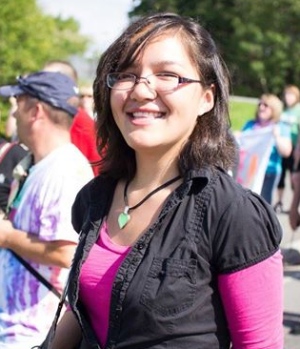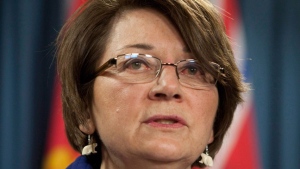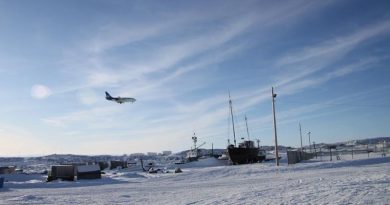Nunavut coroner to launch inquiry into suicides

The chief coroner in Canada’s eastern Arctic territory of Nunavut is calling an inquiry into the high rates of suicide in the territory.
In an interview with CBC this morning, Padma Suramala said she’ll hold a “discretionary inquest” into three suicides, selected at random, under the authority of Section 21 of the Coroner’s Act.
Last year, 45 people in Nunavut took their own lives, the highest level of suicides ever recorded in the territory, which has had a recognized suicide crisis since it began in 1999.
In 2013, 10 people took their lives in Iqaluit, a city with a population of less than 7,000.
There have now been 434 suicides in the territory since 1999: mostly male, mostly Inuit, mostly young.
Fathers, mothers losing children

Joanasie Akumalik has lived the dreaded experience.
In October of last year, the Iqaluit city councillor and father lost his son, Aapi, one of twins, to suicide.
Akumalik says he saw signs that Aapi was distant.
“At times we were worried because he was staying in his room too long… starting to drink a bit… punching walls,” Akumalik says. “He didn’t like us to be loud in the mornings. Those kinds of indications let us know that something was happening with him.”
Akumalik has a message for other troubled young people: “Talk to your parents. We cannot hear what you’re thinking.”
Theresa Parker of Baker Lake lost her son, Brandon, on Dec. 5. He was 19.
“I need to heal inside of me,” she says. “I’m still a bit weak.”
Nonetheless, this Saturday, Parker plans to lead a community walk to Prince River, seven or eight hours away from the community.
“It’s not only for my son. It’s for other people too that got left behind from suicide,” she says.
Environment Canada is calling for temperatures between -37 and -42 Saturday.
“I know it’s cold, but nothing’s gonna stop me.”

Leaders call for action
At a press conference in Iqaluit yesterday, on an unrelated topic, Health Minister and Nunavut MP Leona Aglukkaq, was clearly disturbed by the numbers.
“It is a tragic situation in the North,” Aglukkaq said.
She says the federal government has put measures in place to help.
“The investments we have put forward to support Embrace Life council as an example, as well as through the Territorial Health Sustainability Initiative of $30 million was put to developing mental health programs.”
Others want more to be done.
“We have had for decades now a growing and increasing number of suicides,” says Marie Wilson, a commissioner with the Truth and Reconciliation Commission. “At what point do we start do we stand up as a country and say this is an epidemic and this is totally unacceptable and we have to put extraordinary resources towards it?”
Wilson says more supports are needed in the North, including a designated mental health centre, an idea that was proposed in the commission’s interim report in 2012.
Jack Hicks is a suicide researcher who is investigating Inuit suicides for a PhD.
He says he’s sickened by the number of deaths in 2013.
“Nunavut, and a few other parts of the Inuit world, are really in a different zone when it comes to the levels of suicide, especially youth suicide,” Hicks says.
“When you have that kind of loss, year after year, it has a cumulative effect. So many families have lost so many loved ones, that every time there’s another suicide, it has a re-traumatizing effect.”
Hicks links suicide to historical trauma, which he says, is a problem that won’t go away on its own.
“This is not necessarily going to stop if people don’t do anything,” he says. “It’s just brutal.”
Hicks says the real question is what’s happened to the suicide prevention strategy, which he worked on.
Suicide prevention plan questioned

The Nunavut suicide prevention strategy was published in 2010, with a detailed action plan released in September 2011. It was the collective work of the Nunavut government, the Nunavut land claims organization, RMCP and Nunavut’s suicide prevention group, the Embrace Life Council.
The plan called for everything from providing more counselling to improving early childhood development opportunities, educating the public on suicide risk factors, and providing better supports to communities that experience clusters of suicides. The deadline for most initiatives is March of this year.
“Why has the territorial government been so weak in terms of implementing the action plan from the Nunavut suicide prevention strategy?” Hicks asks. “If they have taken aggressive measures, this has not been communicated to the public.”
Lynn Ryan Mackenzie is the Nunavut government’s executive director of mental health and addiction.
“We’re all trying to coordinate and move this agenda forward however we can,” she says. “We know that suicide has overlays in terms of homelessness and mental health, poverty.”
Ryan Mackenzie says the suicide prevention strategy’s action plan will be evaluated this March.

Young people need somewhere to turn
Meanwhile, many young people say the North lacks the resources that are badly needed.
Jesse Fraser grew up in Sanikiluaq, a community of 800 on the Belcher Islands in Hudson Bay.
“There were a lot of times when I didn’t even think that it was even an option to talk to someone who was trained, who could tell me that it’s Okay, that whatever I was feeling or thinking was understandable or normal. That there shouldn’t be any shame in that.”
Fraser now lives in Newfoundland-Labrador, where she’s taking a break halfway through her psychology degree, for her mental health. Fraser says she’s fortunate to be able to seek out resources for herself, but more is needed in Nunavut.
“There should be a whole lot more resources because it’s so needed,” she says. “There’s so many people thinking about suicide and attempting suicide and often doing it.”
“Some communities don’t even have a social worker, or a designated mental health worker,” she says.
Mary Simon, past president of the national Inuit organization, Inuit Tapiriit Kanatami, and a former circumpolar ambassador, has spoken publicly about her own battle with depression.
She too was able to get professional help.
“You can overcome mental health issues, but you need support and help to do it, and in the North, we lack that support.”
“I didn’t see suicide as an option, which I am thankful for, but I sought the advice of doctors, which I am thankful for.” It’s almost impossible to get out of it by yourself, and it depends on what you’ve been through in your life.”
Related Links:
Canada:
The elephant in the room – Mental health in Arctic communities, Blog by Heather Exner-Pirot
Nunavut suicides reach record numbers, CBC News
Video: Bridging the Divide, Eye on the Arctic
Suicide rates increase as Alaska community sizes get smaller, farther North, Alaska Dispatch
Tragic wave of suicides batter remote Alaska villages, Alaska Dispatch



